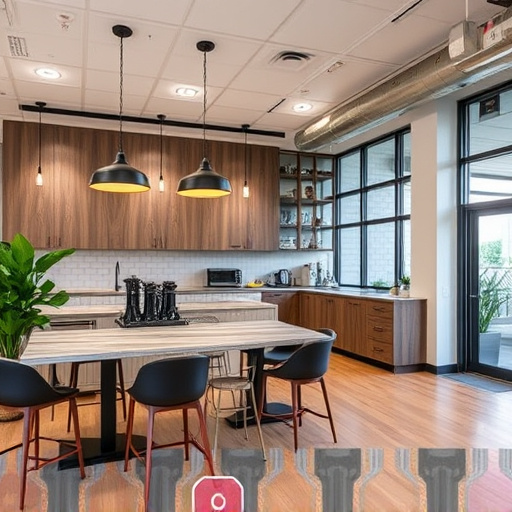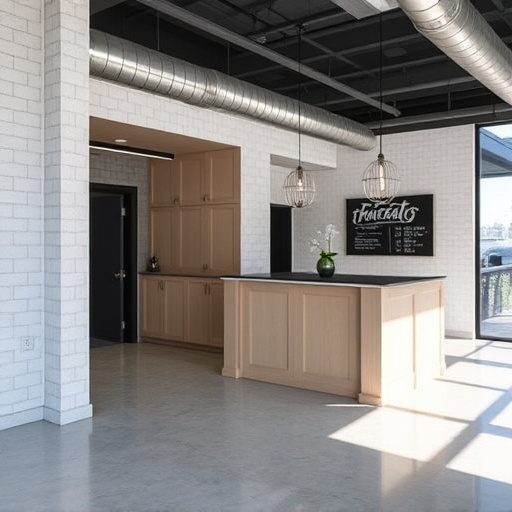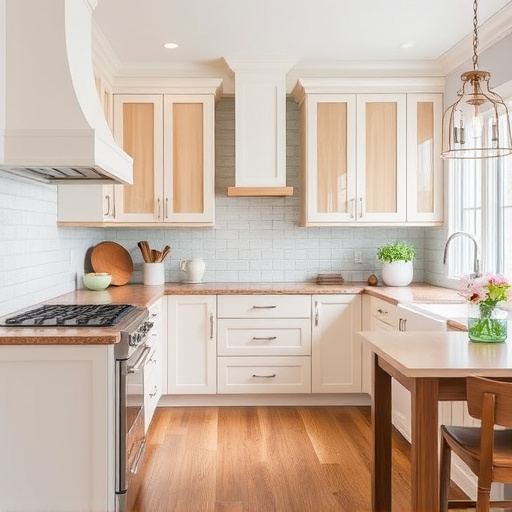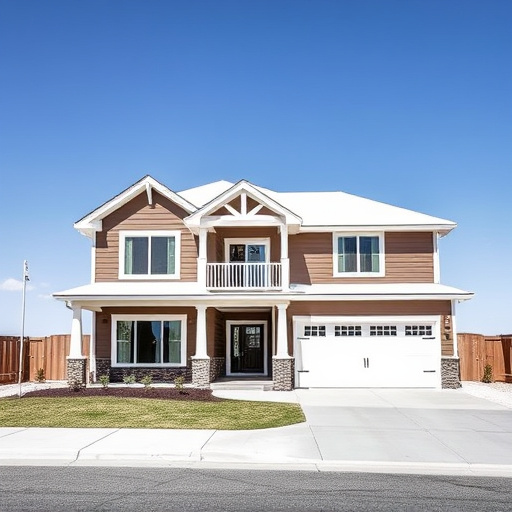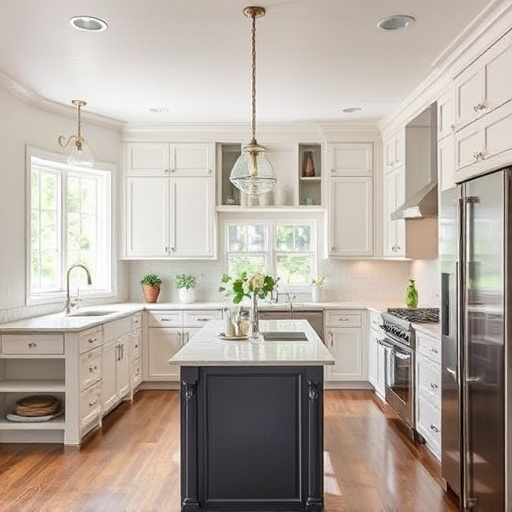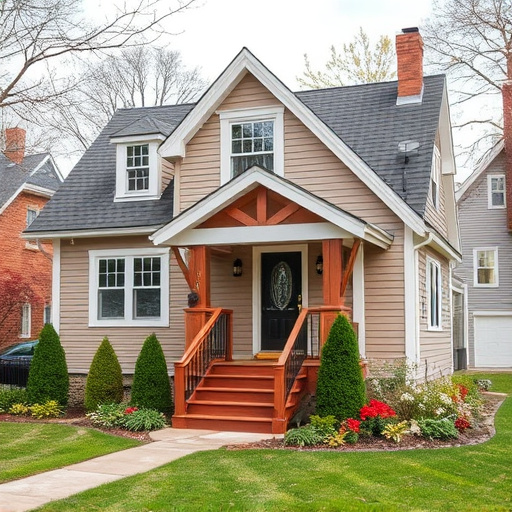When remodeling floors in high-traffic residential areas like kitchens, selecting durable materials such as luxury vinyl plank (LVP) or ceramic tiles is crucial for a longer-lasting investment. Understanding foot traffic patterns helps in choosing appropriate flooring options that can withstand heavy use. For commercial spaces, vinyl is ideal for heavy traffic while tile remains a classic choice for entryways due to its slip-resistance. Evaluating space needs, budget, and design preferences is vital before selecting the best flooring for any flooring remodel project.
Revamp your high-traffic areas with our expert flooring remodel tips! Navigating dense foot traffic requires durable materials and meticulous installation. In this guide, we delve into the best practices for transforming your space. From understanding foot traffic patterns to choosing the right flooring—such as hardwood, vinyl, or tile—and mastering installation techniques, we cover it all. Learn how to maintain and care for your new floors to ensure longevity, addressing stains and seasonal care. Get ready to revolutionize your home with a robust and stylish flooring remodel.
- Choosing Durable Flooring for High-Traffic Zones
- – Understanding foot traffic patterns in high-traffic areas
- – Exploring durable flooring options: pros and cons of popular choices (e.g., hardwood, vinyl, tile)
Choosing Durable Flooring for High-Traffic Zones

When undertaking a flooring remodel, especially for high-traffic areas like kitchens and other residential spaces, selecting durable materials is paramount. These zones see constant footfall, from meal preparations to daily commutes, which can take a toll on floors. Opting for resilient flooring solutions designed to withstand heavy wear and tear ensures your investment lasts longer without showing signs of early deterioration.
Considered options for such settings include luxury vinyl plank (LVP) or ceramic tiles. LVP is known for its water resistance, making it ideal for kitchens prone to spills and splashes. Ceramic tiles, on the other hand, offer excellent durability alongside a wide array of aesthetics, allowing for customized home renovations that seamlessly blend functionality with style. Choosing the right flooring for these areas not only enhances your space’s visual appeal but also contributes to a more comfortable and practical living environment in the long run.
– Understanding foot traffic patterns in high-traffic areas
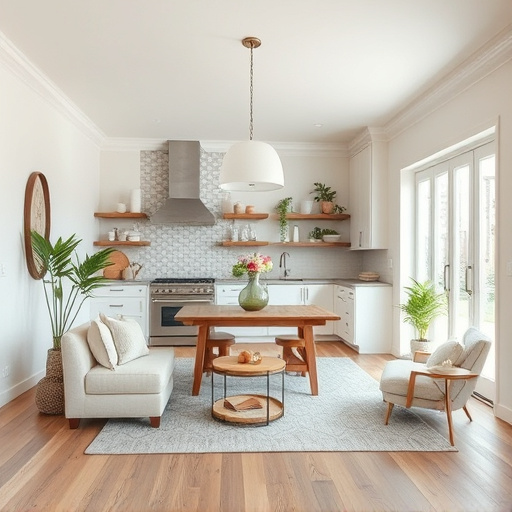
Understanding foot traffic patterns is a crucial first step in any flooring remodel, especially for high-traffic areas like kitchens and bathrooms. These spaces often serve as the heart of the home, where families gather, meals are prepared, and daily routines unfold. By observing how people move through these areas, you can make informed decisions about the type of flooring that will best withstand heavy use. For instance, a kitchen with a central island or a bathroom with multiple entrances may experience higher traffic in specific zones, dictating the need for durable materials that can handle frequent passage and potential spills or scratches.
In the world of home remodeling, recognizing these patterns allows for functional and aesthetically pleasing results. Different flooring options cater to various levels of foot traffic. For high-traffic areas, choose materials like ceramic tile or luxury vinyl plank (LVP) flooring, known for their resistance to wear and tear. Conversely, lower-traffic zones might be suitable for more decorative options like hardwood or natural stone, which offer visual appeal without the same level of practicality in heavy use settings.
– Exploring durable flooring options: pros and cons of popular choices (e.g., hardwood, vinyl, tile)

When exploring a flooring remodel for high-traffic areas, durability is key to ensure longevity and minimize future costs. Popular choices like hardwood offer natural beauty and excellent value but require more maintenance and can be susceptible to scratches and dents. Vinyl flooring is an affordable option known for its durability and water resistance, making it ideal for kitchens and bathrooms, while tile provides a versatile, low-maintenance choice that’s easy to clean and offers endless design possibilities.
In a multiple room remodel, considering floor replacements that cater to high footfall areas is vital. For instance, vinyl excels in commercial settings due to its ability to withstand heavy use without compromising aesthetics. Meanwhile, tile remains a classic choice for entryways and hallways thanks to its slip-resistant properties and ease of maintenance. Each flooring option has its pros and cons, so carefully evaluating your space’s needs, budget, and design preferences is essential when embarking on any home renovation project involving floor replacements.
When remodeling floors in high-traffic areas, selecting the right material is key. By understanding foot traffic patterns and considering durable options like hardwood, vinyl, or tile, you can make an informed decision that withstands the test of time and heavy use. Remember, a well-chosen flooring not only enhances aesthetics but also contributes to a functional and long-lasting space. For a successful flooring remodel, start by evaluating your needs and don’t be afraid to explore the pros and cons of each material to find the perfect fit.








